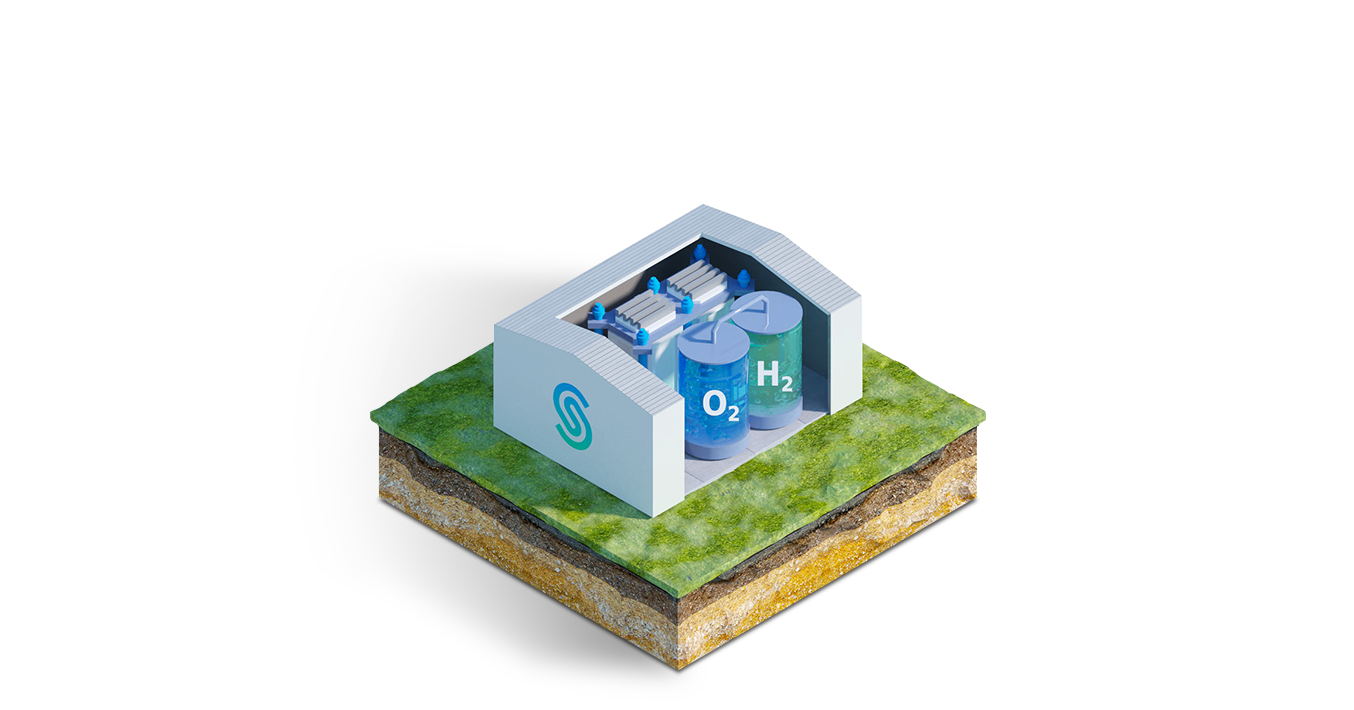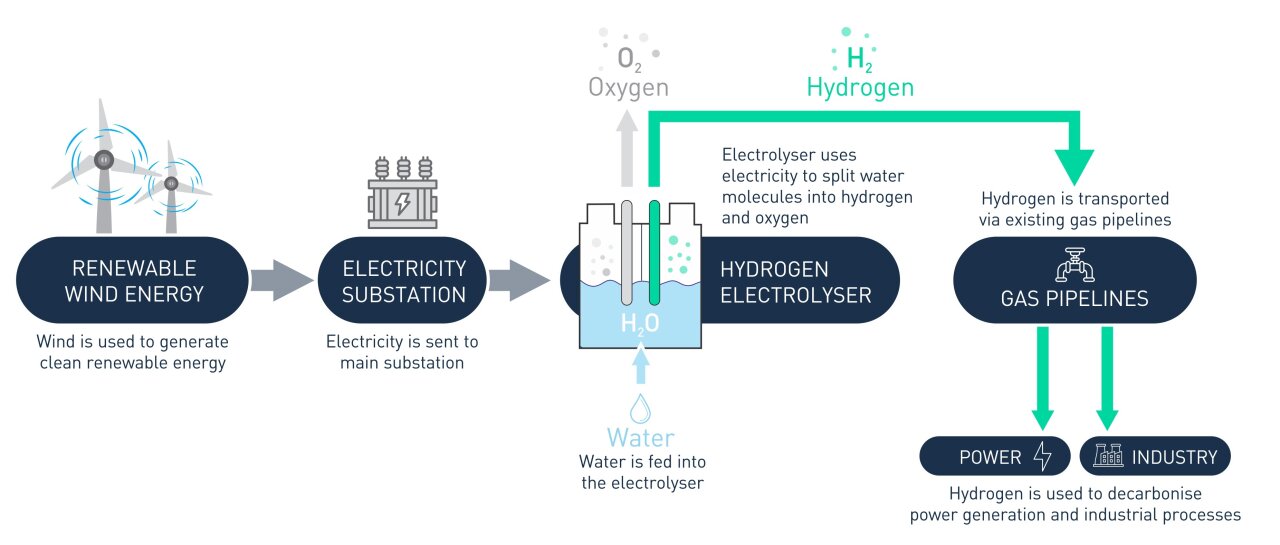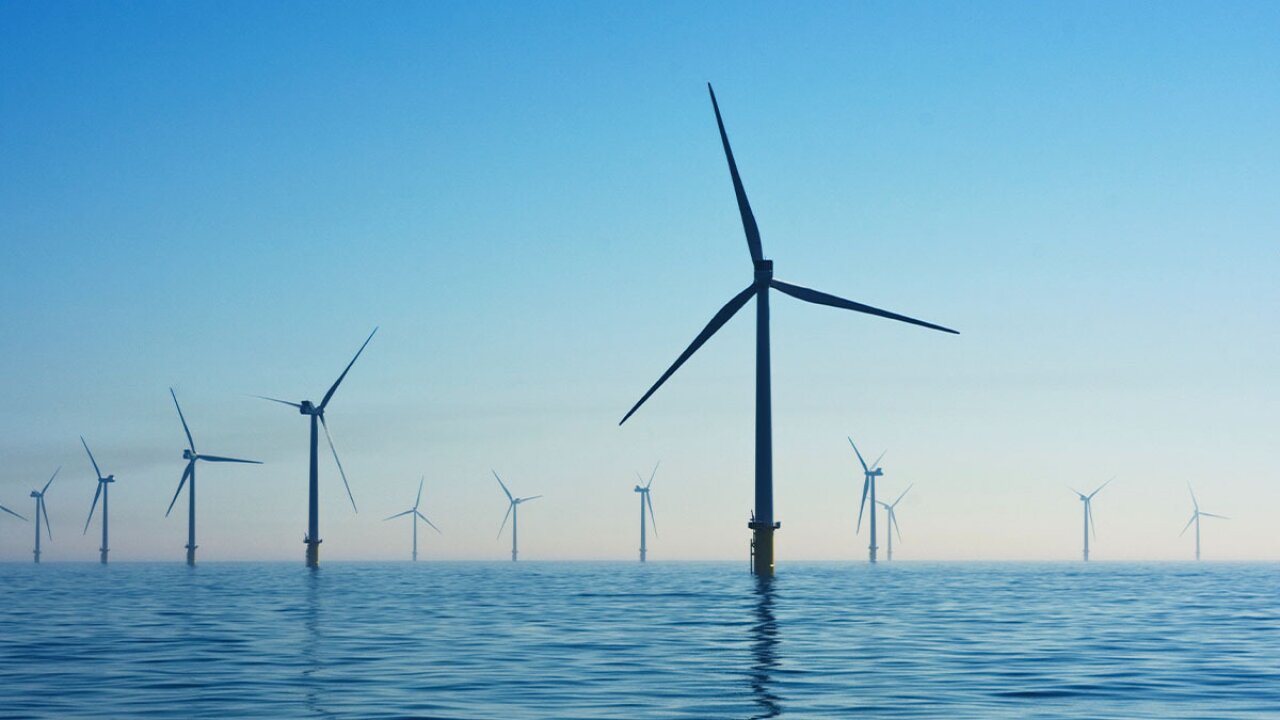Kintore Hydrogen
Vision
Kintore Hydrogen is a proposed facility which will use electrolysis technology to turn offshore wind generated electricity into green hydrogen.
Once complete it will be one of the largest of its type in Europe, providing the UK gas network with a large supply of green hydrogen, providing up to 60% of the Scottish Government’s target for low-carbon production.

3GW
Total electrolyser capacity
500MW
First phase
200K
Tonnes of hydrogen per year
The challenge
The Scottish Government has targeted a five fold increase in offshore wind energy generation by 2030, to shift the energy system to being renewables-led. This growth is underway, with the Scotwind leasing programme supporting up to 28GW of offshore wind projects in the coming years.
At full capacity, the amount of energy generated in and off the shores of Scotland will far exceed local demand, creating an opportunity to supply that energy to users further south. As such, the North East's economy of the future could be significantly underpinned by investment in offshore wind - but at the moment this investment is constrained. This is because the national electricity grid that sends the wind energy across the country requires a transformational upgrade, which is not easy to achieve quickly - it will take significant time and money.
At full capacity, the amount of energy generated in and off the shores of Scotland will far exceed local demand, creating an opportunity to supply that energy to users further south. As such, the North East's economy of the future could be significantly underpinned by investment in offshore wind - but at the moment this investment is constrained. This is because the national electricity grid that sends the wind energy across the country requires a transformational upgrade, which is not easy to achieve quickly - it will take significant time and money.
Up to
28
GW of offshore wind projects supported by Scotwind leasing programme in coming years
The opportunity
To overcome this, Kintore Hydrogen can take electricity produced by wind offshore of Scotland and turn it into hydrogen, which can then be sent through a network of pipelines across the country to areas urgently needing to decarbonise, such as power generation facilities and energy intensive industrial clusters. Users will be able to transition away from high-carbon natural gas to green hydrogen. Kintore Hydrogen provides a route to trading Scotland's offshore wind power nationally, and potentially exporting internationally.
3GW is equivalent to
30
% of the UK Government's 10GW low-carbon hydrogen production target
The Kintore Hydrogen approach

The site
The proposed project site is near Kintore substation - which provides electricity to power the electrolyser - and near major pipelines which are part of the national gas network. The green hydrogen produced on site can be injected into these pipelines for transport and use across the country.
Backed by UK Government
Kintore Hydrogen has backing from the UK Government through the Net Zero Hydrogen Fund Strand 1, which is aiming to build the pipeline of hydrogen production projects in the UK. We will be sharing our learning on this project in due course.



About us
Who is Statera?
Statera is a UK-based energy company that develops, owns and operates flexible generation, battery storage, pumped hydro and green hydrogen projects which will all provide critical grid balancing support in a future renewables-led system.
These assets will help the UK build more renewable energy, more quickly, by providing the flexible capacity needed to balance the future grid during periods of extended shortfalls and excesses in renewable generation, due to the variability of wind and solar output. In turn, this technology will lower carbon emissions and deliver best value for energy users.
Visit Statera website
These assets will help the UK build more renewable energy, more quickly, by providing the flexible capacity needed to balance the future grid during periods of extended shortfalls and excesses in renewable generation, due to the variability of wind and solar output. In turn, this technology will lower carbon emissions and deliver best value for energy users.

